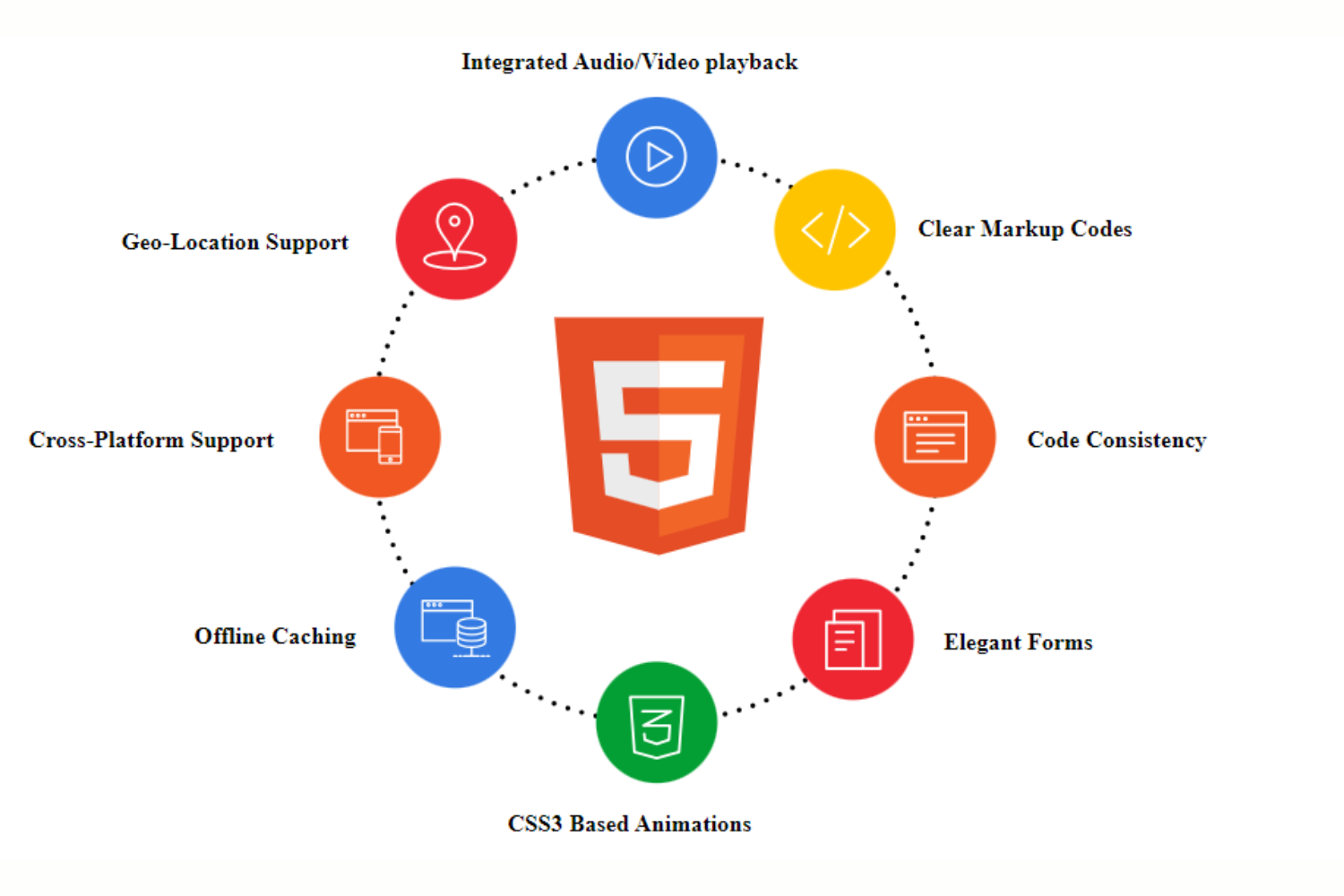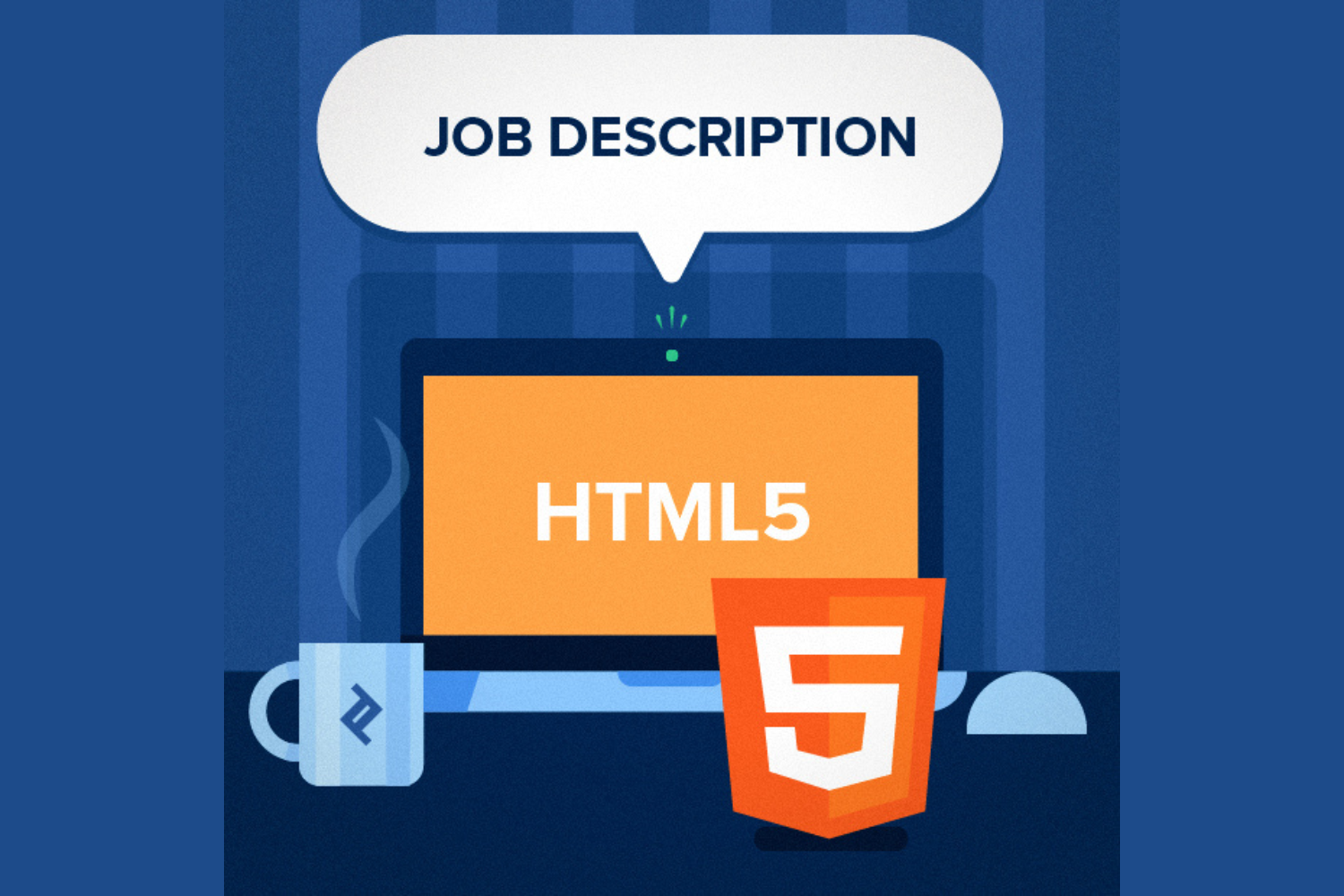
HTML5
HTML5, or Hypertext Markup Language 5, is the latest and most widely adopted version of the HTML standard, which serves as the backbone of the World Wide Web. HTML5 is a markup language used for structuring and presenting content on the internet. It introduces several new features and elements that enhance web development, including multimedia support without the need for plugins (e.g., native video and audio tags), improved semantics for better search engine optimization and accessibility, enhanced form controls, and the canvas element for drawing graphics. HTML5 also facilitates the creation of web applications with rich user interfaces through APIs like Web Sockets for real-time communication, local storage for offline data, and the geolocation API. Its adaptability to various devices and browsers makes it a fundamental technology for modern web development, enabling responsive, interactive, and multimedia-rich web experiences.
To understand the fundamentals and workings of HTML5, let’s break it down into key aspects:
1.Markup Language: HTML5 is a markup language used to structure the content of web pages. It consists of a set of elements and attributes that define the structure and presentation of web documents. Elements are enclosed in tags, and attributes provide additional information about elements. For example, <h1> is an element for defining a top-level heading, and ‘src’ is an attribute used with the <img> element to specify the image source.

2.Document Structure: HTML5 documents have a standardized structure, typically beginning with a <!DOCTYPE> declaration that specifies the document type. The basic structure includes <html> as the root element, containing <head> (metadata) and <body> (content) sections. The <head> section contains information like the page title, character encoding, and links to external resources, while the <body> section holds the visible content of the page.
3.Elements and Semantics: HTML5 introduces new semantic elements such as <header>, <nav>, <article>, <section>, and <footer>. These elements add meaning to the content, making it easier for search engines and assistive technologies to understand the structure and purpose of the page. For example, the <header> element typically contains the site logo and navigation menus, while the <article> element signifies a self-contained piece of content.
4.Multimedia: HTML5 includes native support for multimedia content. The <video> and <audio> elements allow you to embed videos and audio files directly in web pages without relying on third-party plugins like Flash.
5.Canvas: The <canvas> element provides a space for dynamic, scriptable rendering of 2D graphics and animations. JavaScript can be used to draw and manipulate graphics within the canvas, making it suitable for interactive applications and games.
6. Forms: HTML5 enhances form elements with new input types, such as email, date, and URL, and adds attributes like ‘required’ and ‘pattern’ for client-side validation. It also introduces the <datalist> element for providing predefined options in input fields.
7. Local Storage: HTML5 enables the use of the ‘localStorage’ and ‘sessionStorage’ APIs to store data on the client’s device, allowing web applications to work offline or to save and retrieve data between sessions.
8. Geolocation: The Geolocation API in HTML5 lets web applications access a user’s geographical location, enabling location-based services.
9. WebSockets: The WebSocket API provides a full-duplex communication channel between a web browser and a server, allowing real-time data exchange. This is valuable for applications that require live updates, such as chat applications.
10. Responsive Design: HTML5 works in conjunction with CSS3 and media queries to create responsive web designs that adapt to different screen sizes and orientations. This is critical for ensuring a consistent user experience across various devices.
11. Security: HTML5 introduces security features like the Content Security Policy (CSP) to mitigate cross-site scripting (XSS) attacks. It also enforces stricter security controls on geolocation and other sensitive APIs.
SCOPE OF HTML5:
The scope of HTML5 is extensive and promising, reflecting its central role in modern web development. As the latest standard for structuring web content, HTML5 continues to shape the digital landscape. Its rich set of features, including native multimedia support, semantic elements for better content structure, offline capabilities, and responsive design, positions it as the go-to technology for creating web experiences that adapt to the diverse range of devices and platforms in today’s digital world. HTML5’s significance extends beyond traditional web browsers, as it serves as the foundation for mobile applications, cross-platform solutions, and progressive web apps. Furthermore, it plays a vital role in emerging technologies such as virtual reality (VR), augmented reality (AR), and the Internet of Things (IoT), where it enables the presentation and interaction with content in new and immersive ways. As the web ecosystem evolves, HTML5 remains at the forefront, offering a versatile and powerful toolkit for web developers, ensuring its continued relevance and significance in shaping the future of the internet.
Here are some key aspects of the scope of HTML5:
Rich Web Applications
Cross-Platform Compatibility
Responsive Design
Mobile Applications
Media and Gaming
User Experience
Accessibility
E-commerce and Online Services
Search Engine Optimization
Security
Progressive Web Apps (PWAs)
Machine Learning and AI

JOB ROLE
Here are some job roles where proficiency in HTML5 is crucial:
Front-End Developer
Web Designer
UI/UX Designer
Front-End Engineer
Email Developer
Game Developer
Interactive Web Content Developer
Digital Marketing Specialist
SEO Specialist
Content Management

Course Highlights/ Details:
1. Suited for students, fresher’s, professionals, and corporate employees
2. Live online classes
3. 4-month program
4. Certificate of completion
5. Decision Oriented Program of Analysis
6. Live Classes by highly experienced faculties
7. Hands-on experience with real-life case studies.
Salary
HTML5 Developers from SCODEEN Global have received packages ranging from
₹13 Lakhs to 35 lakhs per Annum.

CONCLUSION:
In conclusion, HTML5 represents a significant leap forward in web technology, transforming the way we create and experience content on the internet. Its rich set of features, including native multimedia support, semantic elements, and enhanced form controls, has empowered developers to build interactive, accessible, and responsive web applications. HTML5’s compatibility with various devices and browsers, along with its offline capabilities and real-time communication tools, has opened new frontiers for web development. Moreover, it has revolutionized the way we design and structure web pages, contributing to better search engine optimization and user experiences. As a cornerstone of modern web development, HTML5 continues to shape the digital landscape and promises an exciting future for the ever-evolving world of the web.

